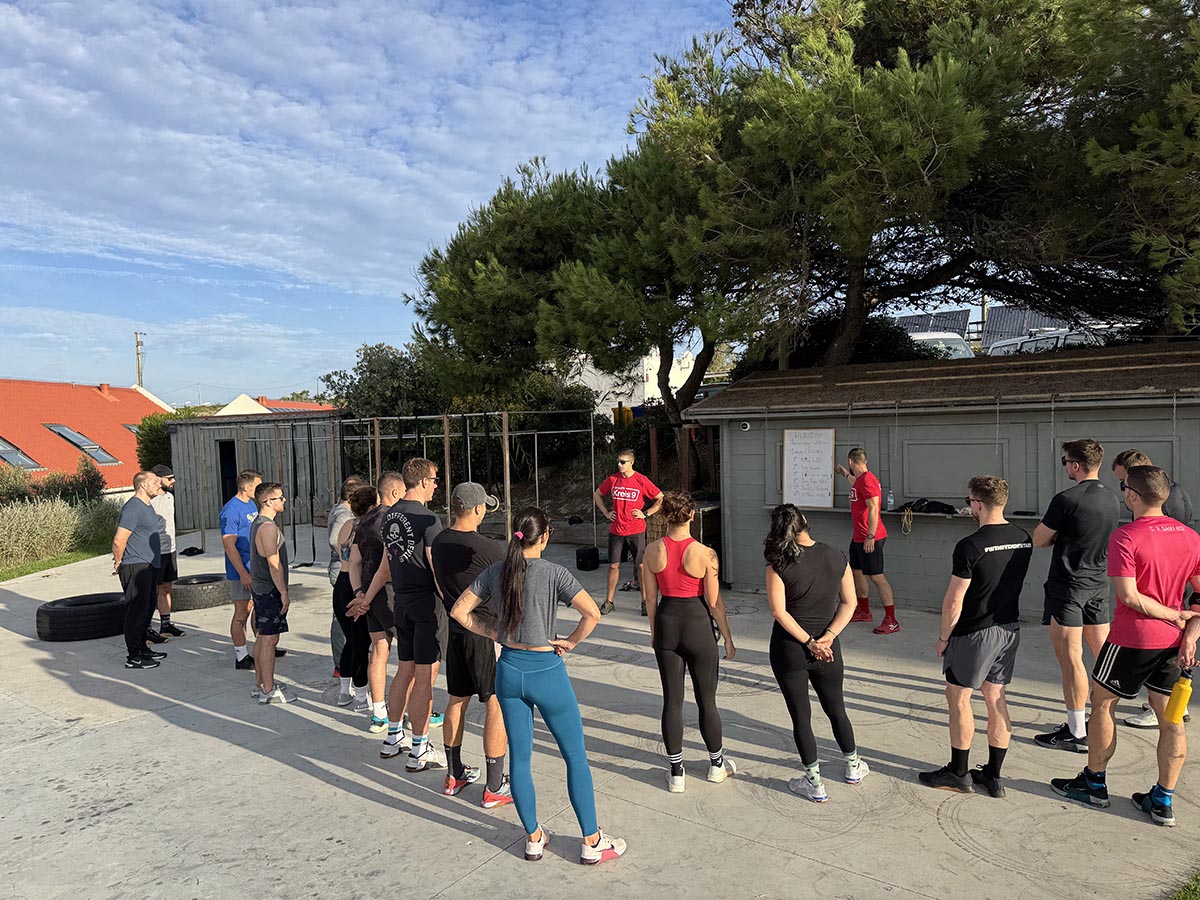How much to train: finding the right balance between movement and training

How much to train is a question we coaches get asked every single day. When it comes to human movement, one thing is clear: more is always better. If you are not sleeping, you should be moving. Humans are built to move, and our bodies thrive on regular, varied motion. Whether it’s walking, stretching, gardening, playing with kids or simply standing instead of sitting, every bit of movement you add to your day is a step toward better health. But when it comes to more structured physical activity like training, the balance gets a bit more complex.
We live in a world where we’re constantly warned about the risks of overdoing it, especially with exercise. You’ve probably heard messages warning about the dangers of too much exercise, but it’s important to recognize why we hear these warnings so often. Our natural tendency, or bias, is toward not moving enough. The real challenge for most people isn’t exercising too much; it’s finding ways to incorporate enough movement into their daily lives. However, when it comes to training, there’s an important distinction to be made: movement and training are not the same thing.
More movement is always better
Let’s start with movement in general—whether it’s taking the stairs, standing up during meetings, walking your dog, or simply fidgeting at your desk. These small movements accumulate throughout the day and contribute to your overall well-being. There’s no upper limit to how much we should move in this regard; more is always better. The health benefits of moving frequently include improved circulation, better joint health, reduced stiffness, and even enhanced cognitive function.
Humans are naturally designed for constant low-level movement. Historically, our ancestors spent most of their days moving, walking, gathering food, or performing manual tasks. Modern life, with all its conveniences, has dramatically reduced the amount of daily movement required, which means we need to consciously add it back into our routines.
For most people, the goal should be to move more, all the time. There’s no risk of “too much” in this sense. Moving your body throughout the day, rather than remaining sedentary, helps maintain mobility and prevents the stiffness and muscle atrophy that can come from long periods of inactivity.
Training is not the same as movement
Now let’s talk about training. Training is a more deliberate and intense form of exercise with a specific goal—whether it’s strength, endurance, power, or skill. Training pushes your body beyond its usual limits in a structured way to stimulate adaptation and improvement. This is where the distinction becomes important: while you can’t move too much, how much to train is another ball game.
Training requires a balance between intensity, volume, and recovery. When you train, especially at higher intensities like in CrossFit or other strength-based programs, you’re placing stress on your body to trigger growth or performance improvements. While this stress is necessary for progress, too much of it without adequate recovery can lead to overtraining.
Equally important, training without enough daily movement is a road to disaster. Movement is needed to support recovery, facilitate blood flow, and keep the body’s general fitness level high. Relying solely on training sessions without being active throughout the day limits the benefits of the exercise and increases the risk of injury and burnout. Movement is not just for fitness, but also for the health and resilience of your entire body.
Overtraining: when more is too much
Overtraining happens when you don’t give your body enough resources to recover between training sessions. It can manifest as physical fatigue, increased injuries, decreased performance, and even mental burnout. While your body needs movement, it also needs time to repair and rebuild, especially after intense training sessions. Without adequate recovery, you might find that your performance plateaus or even declines, and your risk of injury increases.
Before diagnosing yourself with overtraining, it’s essential to evaluate three key factors that affect your recovery and overall health:
1. Sleep
No, you are not the exception who can thrive on less than 7 hours of sleep. Adequate sleep (7-9 hours per night) is crucial for muscle recovery, cognitive function, and overall well-being. Poor sleep quality can lead to diminished performance and a higher risk of injury, so be sure that you’re getting enough rest before assuming you’re overtraining.
2. Nutrition
The saying “everything in moderation” doesn’t mean that skipping meals or maintaining mediocre eating habits is acceptable when you’re exercising regularly and trying to make progress. Proper nutrition fuels recovery. Focus on a diet rich in whole foods, including proteins, healthy fats, and carbohydrates, to support both training and recovery.
3. Stress management
Using exercise to “shut down” the brain can be a misuse of training. While exercise can help manage stress, using high-intensity training to escape from mental or emotional challenges might lead to overtraining without addressing the root cause of stress. Balancing mental and emotional health with proper recovery strategies is essential for sustainable progress.
The conditions for “more is better”
To make sure you are moving toward health, vitality, and progress, there are a few conditions to keep in mind:
1. Prioritize recovery
Recovery isn’t just about resting between training sessions; it includes sleep, proper nutrition, and stress management. Recovery time allows your muscles to repair, your nervous system to recalibrate, and your energy stores to replenish. Incorporating active recovery, like light stretching or walking, can help promote circulation and relieve stiffness without adding extra stress.
2. Vary your training intensity
Not all training sessions need to be high-intensity or high-volume. Some days should focus on technique, mobility, or lower-intensity endurance work to give your body a break from the harder workouts. Varying your intensity can also help prevent mental burnout, keeping your workouts enjoyable and sustainable long-term.
3. Listen to your body
Training plans are important, but it’s just as crucial to listen to your body’s signals. If you’re feeling unusually tired, sore, or stressed, it may be better to opt for a lighter session or an extra rest day. Knowing when to push and when to pull back is key to avoiding overtraining.
4. Consistency is more important than volume
Finally, remember that consistency over time is what produces long-term results, not necessarily how much you train in any given week. It’s better to train moderately and consistently than to train intensely for short bursts and then need extended time off due to burnout or injury.
Conclusion: move more, train smart
In summary, when it comes to movement, more is always better. Moving throughout the day, keeping active in low-intensity ways, and avoiding long periods of sitting or sedentary behavior are key to long-term health. However, when it comes to training, more isn’t always better. The key is to strike a balance between challenging your body and allowing it to recover. Train hard, but train smart, and listen to your body’s signals. That way, you can enjoy both the physical benefits of exercise and the longevity that comes from moving your body every day. I hope I have been able to give you a better insight on how much to train. Want to know more? You know where to find me!
- Erik
About the author:

Meet Erik, a dynamic individual known for his meticulous organization and insatiable curiosity. With a B.Sc. in English Language and Literature and expertise in Regeneration and Nutrition in Sport Science, he’s a master of both words and wellness. As a Level 3 CrossFit Trainer and Gymnastics Specialist, Erik’s journey includes competing at the highest level as a 2019 CrossFit Games Athlete, proving that he’s not just writing his story—he’s living it.







